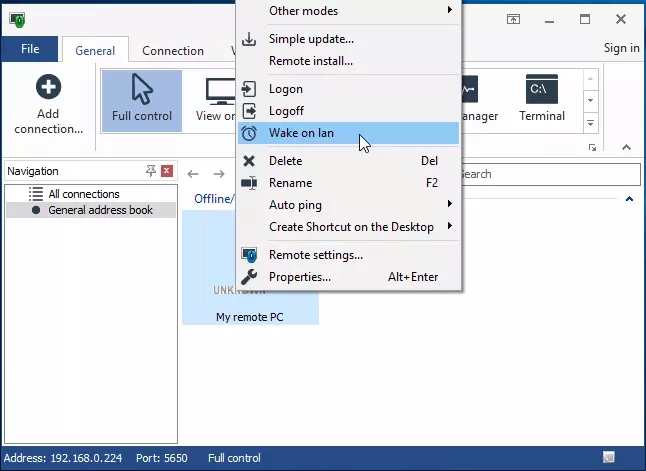

In other cases, you may need a separate program to wake up your PC.

Some programs already come with Wake-on-LAN built-in, including ones you already own. Wake Your Computer With the Right Appįinally, to wake up your computer over the network, you'll need a Wake-on-LAN app on another device, such as your phone or laptop. Again, you may need to play around with settings if you find Wake-on-LAN doesn't work properly. Some people find that they need to disable Fast Startup from this page, though it worked fine for me. Some computers may only support Wake-on-LAN from sleep, while others may allow you to wake up from a powered off state, so you may need to tweak settings in your BIOS or in Windows' Control Panel under Hardware and Sound > Power Options > System Settings. Next, click the Power Management tab in that same window and check two boxes: Allow This Device to Wake the Computer, and Only Allow a Magic Packet to Wake the Computer. (This option wasn't available on all of my test machines, but Wake-on-LAN still worked on each of them, so don't worry if you don't see it.) In the Advanced tab, scroll down to Wake On Magic Packet and ensure it is enabled using the drop-down box on the right. Right-click on your Ethernet adapter-mine is called "Intel(R) l211 Gigabit Network Connection"-and select Properties. Once rebooted into Windows, click the Start menu and search for "Device Manager." Launch the Device Manager, find the Network Adapters section, and expand it to reveal your network interfaces.
Apple remote desktop wake on lan trial#
It varies by PC, so you'll just have to do a little trial and error if you run into problems, or look up directions for your PC's specifications. That's all I needed to do on my machine, but there may be other sleep or hibernate settings you have to tweak here. You can see in the screenshot above that this setting's description mentions "integrated LAN controllers," which is exactly what we're looking for. In other cases, like on my MSI motherboard, it is part of the Resume By PCI-E Device setting.

On some machines, it will be very clearly labeled in the sleep and wake settings. Once you enter the BIOS menu, poke around for the Wake-on-LAN option.
Apple remote desktop wake on lan Pc#
To do this, reboot your PC and press a key at the boot screen-usually Delete, F2, or some other function key (it'll usually say on screen). Enable Wake-on-LAN in the BIOSīefore you can use the feature, you will first need to enable Wake-on-LAN at the hardware level in your computer's BIOS. There are ways to make this work, but it's a bit outside the scope of this guide, so we'll point you in the right direction as best we can. Second, Wake-on-LAN is designed to wake up another computer on your network, so it won't be able to wake up computers on another network-say, if you're at a coffee shop and want to wake up your desktop back home. Check your computer's documentation or BIOS to see if it supports Wake-on-Wireless-LAN (or Wake-on-WLAN). This means the device sending the magic packet can be on Wi-Fi, but the one receiving it will likely need to be plugged in via Ethernet for this to work. Pretty much any modern Ethernet adapter will support Wake-on-LAN, but wireless adapters rarely do. First, the network card of the computer being woken up needs to support the feature. Wake-on-LAN has a few caveats when it comes to support.


 0 kommentar(er)
0 kommentar(er)
